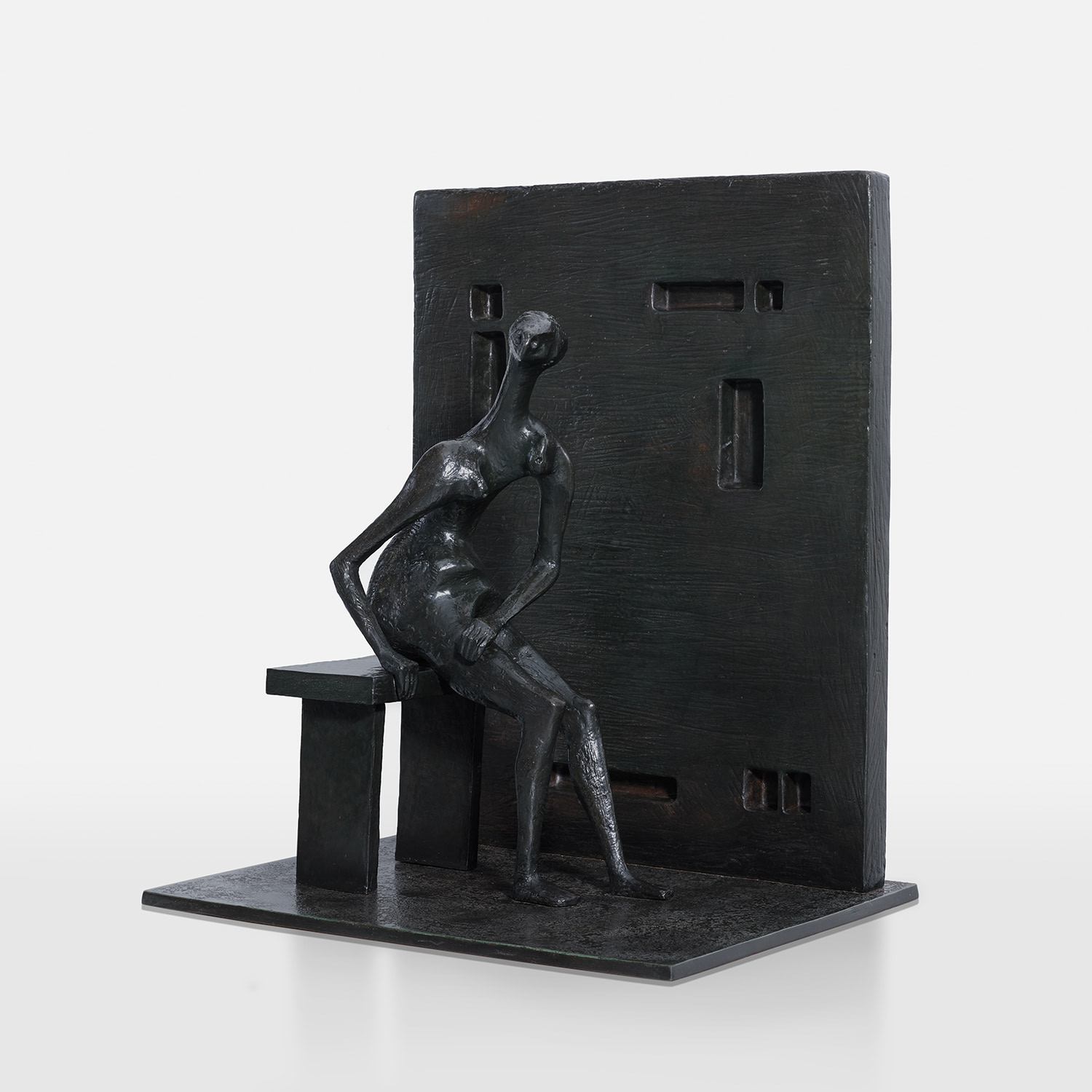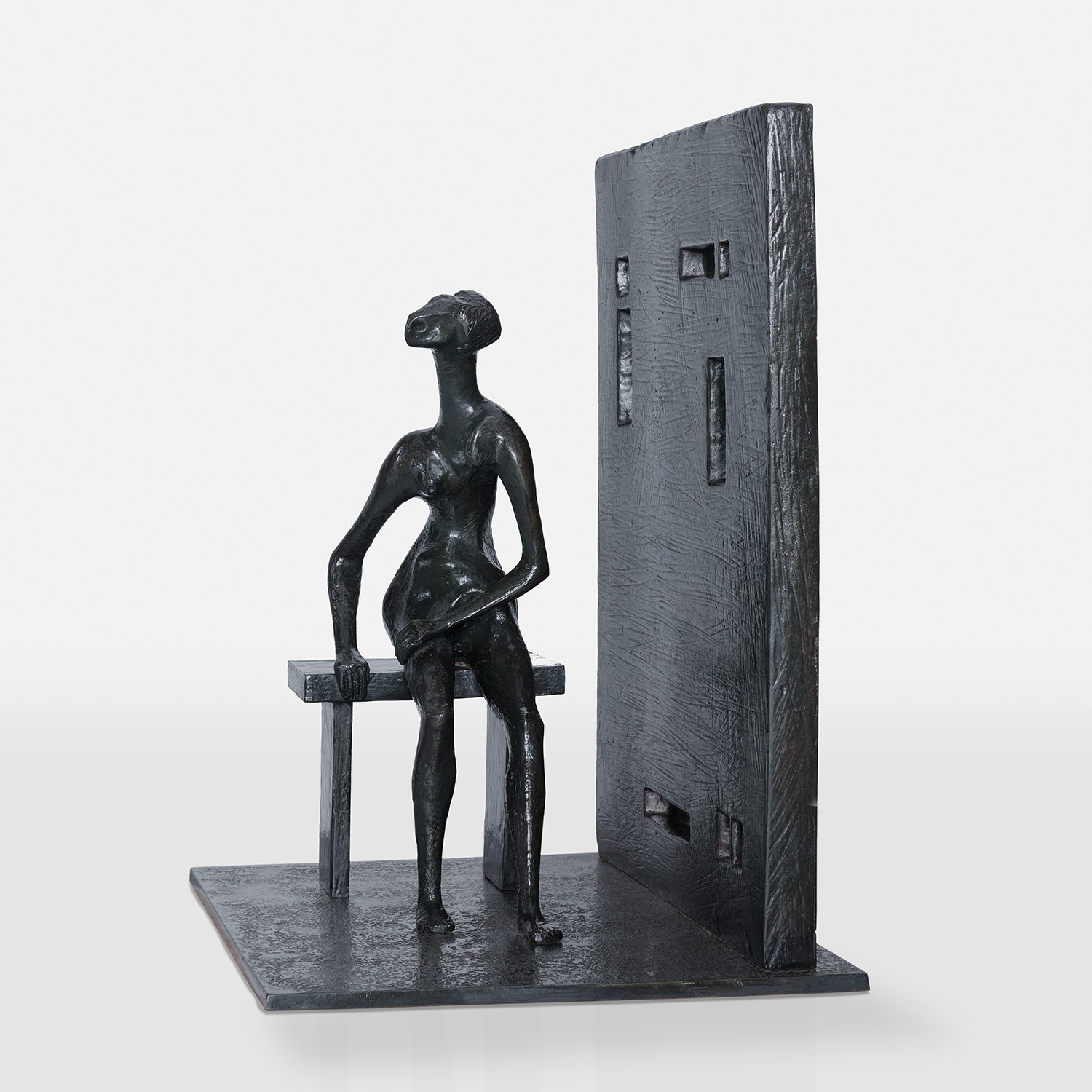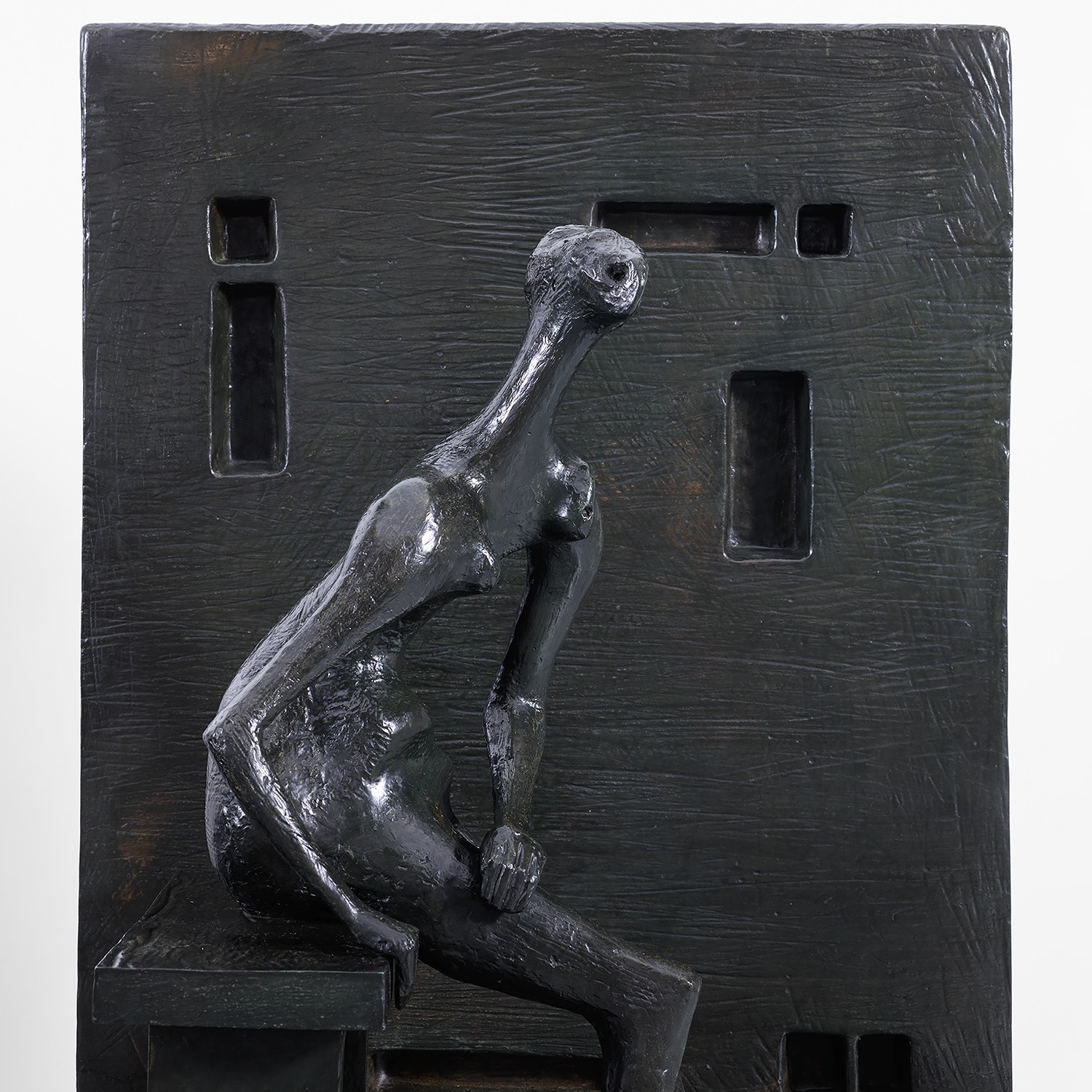







141
Henry Moore
Girl Seated against Square Wall
bronze with dark brown and green patina
40 1/2 x 33 x 27 1/2 in. (102.9 x 83.8 x 69.9 cm)
Conceived in 1957-1958 and cast in 1958, this work is from an edition of 12 plus 1 artist’s proof.
Another example from the edition is housed in the permanent collection of the Norton Simon Museum, Pasadena.
Another example from the edition is housed in the permanent collection of the Norton Simon Museum, Pasadena.